1. Song WH, Park J, Yoo S, Oh S, Cho SY, Cho MC, et al. Changes in the prevalence and risk factors of erectile dysfunction during a decade: the Korean Internet Sexuality Survey (KISS), a 10-year-interval web-based survey. World J Mens Health. 2019; 37:199–209. PMID:
30588782.

2. Smith WB 2nd, McCaslin IR, Gokce A, Mandava SH, Trost L, Hellstrom WJ. PDE5 inhibitors: considerations for preference and long-term adherence. Int J Clin Pract. 2013; 67:768–780. PMID:
23869678.

3. Hatzichristou D, d'Anzeo G, Porst H, Buvat J, Henneges C, Rossi A, et al. Tadalafil 5 mg once daily for the treatment of erectile dysfunction during a 6-month observational study (EDATE): impact of patient characteristics and comorbidities. BMC Urol. 2015; 15:111. PMID:
26563171.

4. Hazan-Molina H, Reznick AZ, Kaufman H, Aizenbud D. Periodontal cytokines profile under orthodontic force and extracorporeal shock wave stimuli in a rat model. J Periodontal Res. 2015; 50:389–396. PMID:
25073624.

5. Becker M, Goetzenich A, Roehl AB, Huebel C, de la Fuente M, Dietz-Laursonn K, et al. Myocardial effects of local shock wave therapy in a Langendorff model. Ultrasonics. 2014; 54:131–136. PMID:
23896623.

6. Hayashi D, Kawakami K, Ito K, Ishii K, Tanno H, Imai Y, et al. Low-energy extracorporeal shock wave therapy enhances skin wound healing in diabetic mice: a critical role of endothelial nitric oxide synthase. Wound Repair Regen. 2012; 20:887–895. PMID:
23110611.

7. Hatzichristou D. Low-Intensity Extracorporeal Shock Waves Therapy (LI-ESWT) for the treatment of erectile dysfunction: where do we stand. Eur Urol. 2017; 71:234–236. PMID:
27402058.

8. Vardi Y, Appel B, Jacob G, Massarwi O, Gruenwald I. Can low-intensity extracorporeal shockwave therapy improve erectile function? A 6-month follow-up pilot study in patients with organic erectile dysfunction. Eur Urol. 2010; 58:243–248. PMID:
20451317.

9. Chung E, Cartmill R. Evaluation of clinical efficacy, safety and patient satisfaction rate after low-intensity extracorporeal shockwave therapy for the treatment of male erectile dysfunction: an Australian first open-label single-arm prospective clinical trial. BJU Int. 2015; 115(Suppl 5):46–49. PMID:
25828173.

10. Lei H, Xin H, Guan R, Xu Y, Li H, Tian W, et al. Low-intensity pulsed ultrasound improves erectile function in streptozotocin-induced type I diabetic rats. Urology. 2015; 86:1241.

11. Jeon SH, Shrestha KR, Kim RY, Jung AR, Park YH, Kwon O, et al. Combination therapy using human adipose-derived stem cells on the cavernous nerve and low-energy shockwaves on the corpus cavernosum in a rat model of post-prostatectomy erectile dysfunction. Urology. 2016; 88:226.

12. Jeong HC, Jeon SH, Qun ZG, Kim KS, Choi SW, Bashraheel F, et al. Effects of next-generation low-energy extracorporeal shockwave therapy on erectile dysfunction in an animal model of diabetes. World J Mens Health. 2017; 35:186–195. PMID:
29164834.

13. Peyton CC, Colaco MA, Kovell RC, Kim JH, Terlecki RP. Erectile dysfunction is predictive of endothelial dysfunction in a well visit population. J Urol. 2016; 195:1045–1050. PMID:
26614890.

14. Wu N, Shen H, Liu H, Wang Y, Bai Y, Han P. Acute blood glucose fluctuation enhances rat aorta endothelial cell apoptosis, oxidative stress and pro-inflammatory cytokine expression in vivo. Cardiovasc Diabetol. 2016; 15:109. PMID:
27496150.

15. Bae WJ, Ha US, Choi JB, Kim KS, Kim SJ, Cho HJ, et al. Protective effects of KH-204 in the bladder of androgen-deprived rats. World J Mens Health. 2015; 33:73–80. PMID:
26331123.

16. Choi SW, Jeon SH, Kwon EB, Zhu GQ, Lee KW, Choi JB, et al. Effect of Korean herbal formula (modified Ojayeonjonghwan) on androgen receptor expression in an aging rat model of late onset hypogonadism. World J Mens Health. 2019; 37:105–112. PMID:
30584994.

17. Jang H, Bae WJ, Kim SJ, Cho HJ, Yuk SM, Han DS, et al. The herbal formula KH-204 is protective against erectile dysfunction by minimizing oxidative stress and improving lipid profiles in a rat model of erectile dysfunction induced by hypercholesterolaemia. BMC Complement Altern Med. 2017; 17:129. PMID:
28235412.

18. Kim IG, Piao S, Lee JY, Hong SH, Hwang TK, Kim SW, et al. Effect of an adipose-derived stem cell and nerve growth factor-incorporated hydrogel on recovery of erectile function in a rat model of cavernous nerve injury. Tissue Eng Part A. 2013; 19:14–23. PMID:
22834730.

19. Lu Z, Lin G, Reed-Maldonado A, Wang C, Lee YC, Lue TF. Low-intensity extracorporeal shock wave treatment improves erectile function: a systematic review and meta-analysis. Eur Urol. 2017; 71:223–233. PMID:
27321373.

20. Kitrey ND, Gruenwald I, Appel B, Shechter A, Massarwa O, Vardi Y. Penile low intensity shock wave treatment is able to shift PDE5i nonresponders to responders: a double-blind, sham controlled study. J Urol. 2016; 195:1550–1555. PMID:
26694904.

21. McMahon C. Efficacy and safety of daily tadalafil in men with erectile dysfunction previously unresponsive to on-demand tadalafil. J Sex Med. 2004; 1:292–300. PMID:
16422959.
22. Sáenz de Tejada I, Anglin G, Knight JR, Emmick JT. Effects of tadalafil on erectile dysfunction in men with diabetes. Diabetes Care. 2002; 25:2159–2164. PMID:
12453954.
23. Tepeköylü C, Wang FS, Kozaryn R, Albrecht-Schgoer K, Theurl M, Schaden W, et al. Shock wave treatment induces angiogenesis and mobilizes endogenous CD31/CD34-positive endothelial cells in a hindlimb ischemia model: implications for angiogenesis and vasculogenesis. J Thorac Cardiovasc Surg. 2013; 146:971–978. PMID:
23395097.

24. Qiu X, Lin G, Xin Z, Ferretti L, Zhang H, Lue TF, et al. Effects of low-energy shockwave therapy on the erectile function and tissue of a diabetic rat model. J Sex Med. 2013; 10:738–746. PMID:
23253086.

25. Gerber RE, Vita JA, Ganz P, Wager CG, Araujo AB, Rosen RC, et al. Association of peripheral microvascular dysfunction and erectile dysfunction. J Urol. 2015; 193:612–617. PMID:
25196657.

26. Nishida T, Shimokawa H, Oi K, Tatewaki H, Uwatoku T, Abe K, et al. Extracorporeal cardiac shock wave therapy markedly ameliorates ischemia-induced myocardial dysfunction in pigs in vivo. Circulation. 2004; 110:3055–3061. PMID:
15520304.

27. Li H, Matheu MP, Sun F, Wang L, Sanford MT, Ning H, et al. Low-energy shock wave therapy ameliorates erectile dysfunction in a pelvic neurovascular injuries rat model. J Sex Med. 2016; 13:22–32. PMID:
26755082.

28. Wang L, Tian W, Uwais Z, Li G, Li H, Guan R, et al. AGE-breaker ALT-711 plus insulin could restore erectile function in streptozocin-induced type 1 diabetic rats. J Sex Med. 2014; 11:1452–1462. PMID:
24766706.

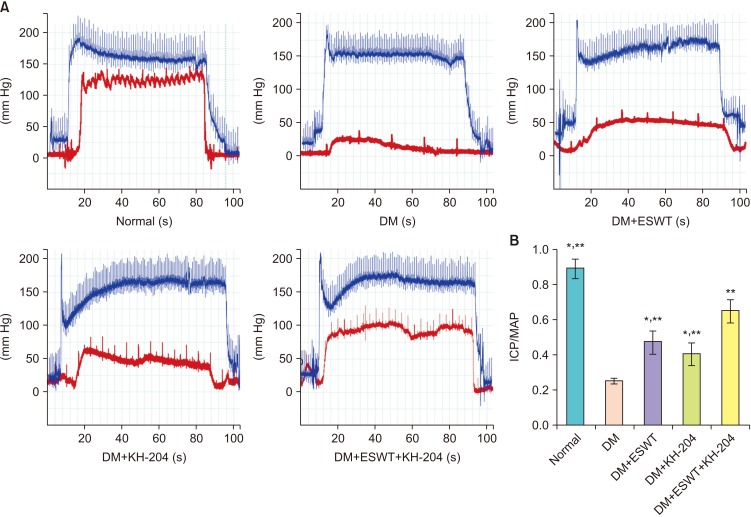
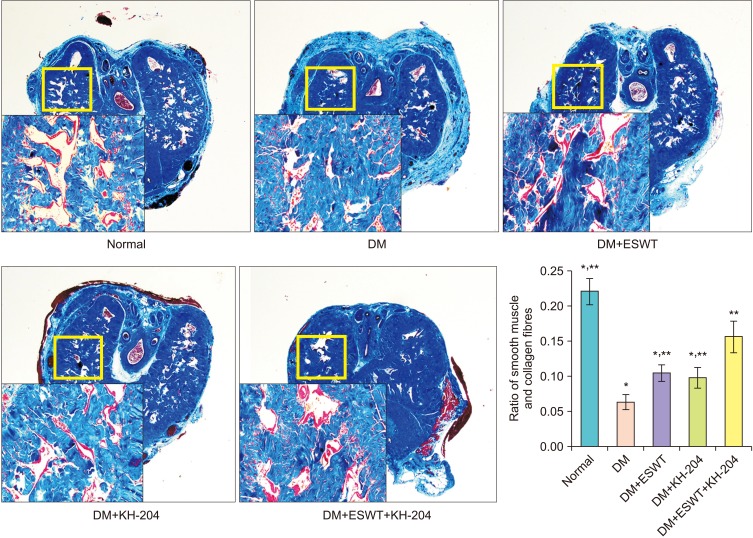
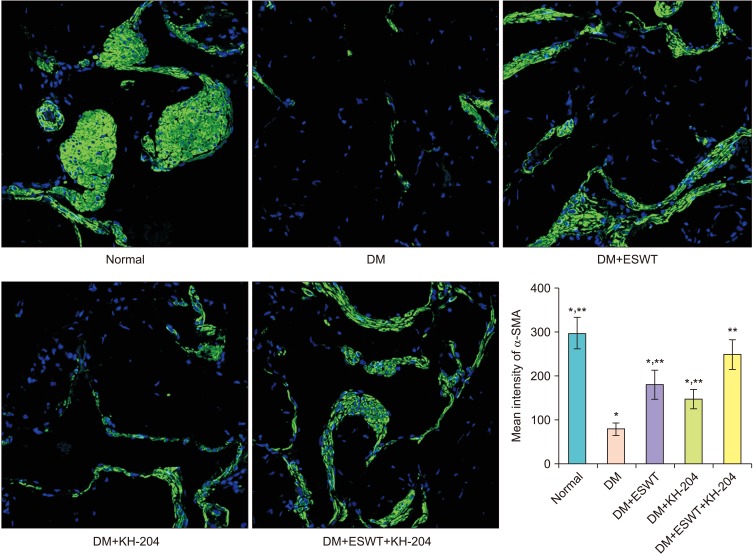
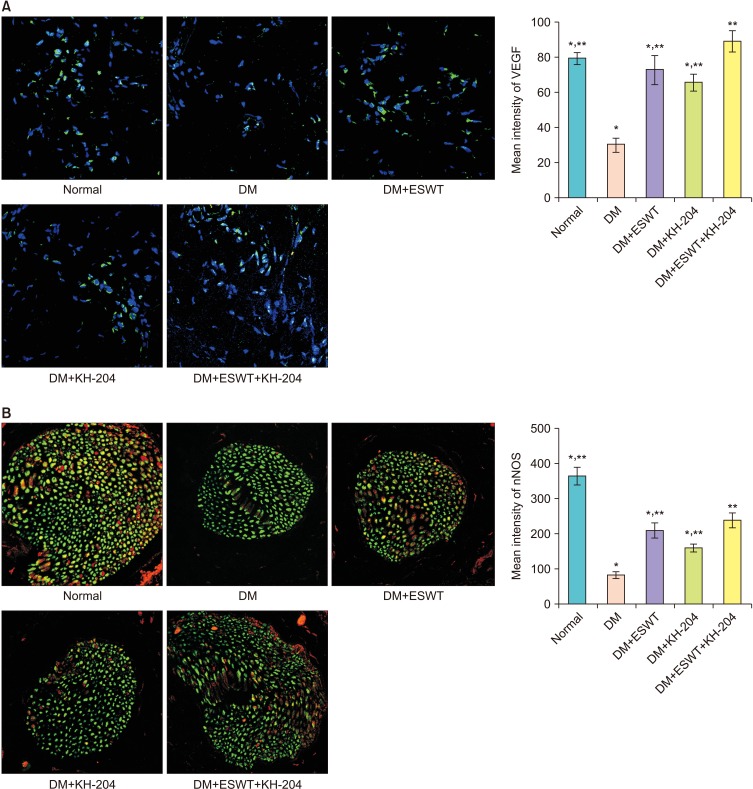
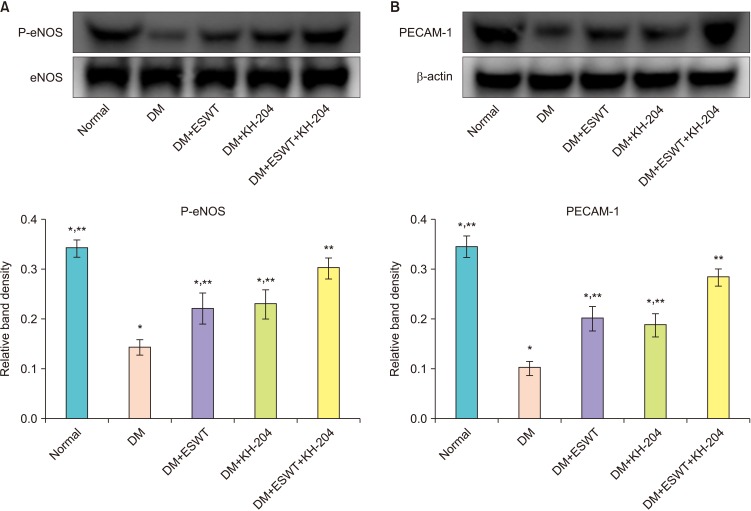




 PDF
PDF ePub
ePub Citation
Citation Print
Print



 XML Download
XML Download